What you need to know about Gibson 'Dreadnought' Jumbos
We decipher some of the mumbo jumbo surrounding Gibson’s most popular flat-top acoustics
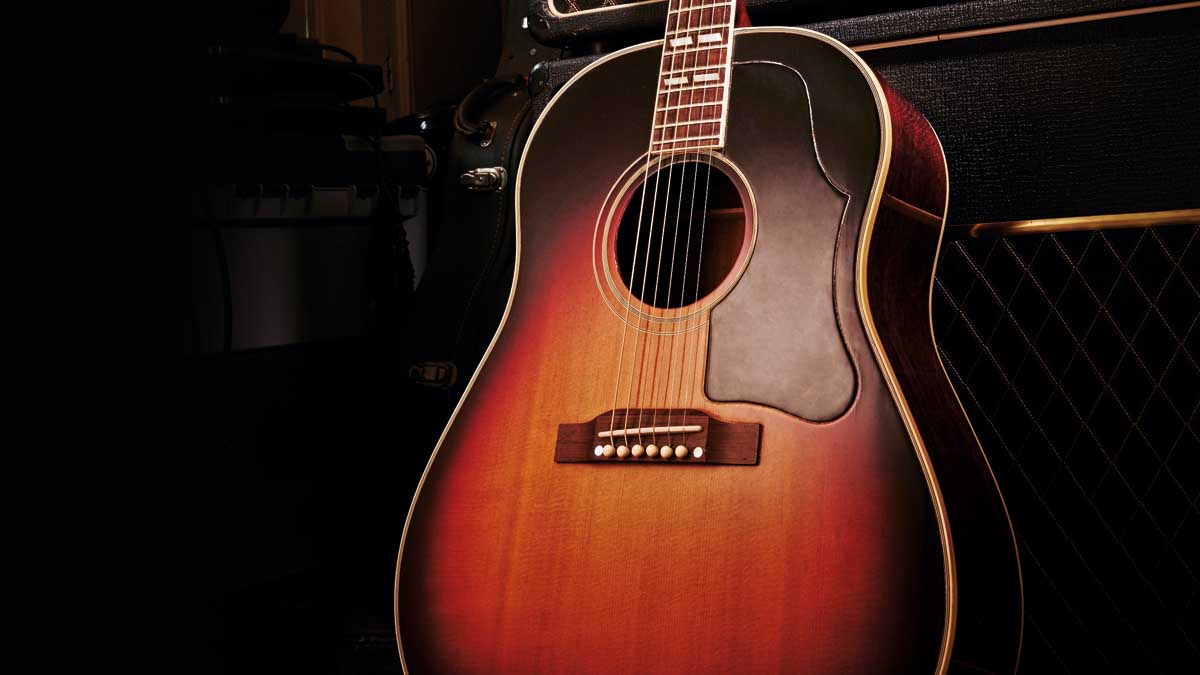
Gibson’s dreadnought designs have been a mainstay of the flat-top world ever since its debut, the Jumbo, was released in 1934.
The concept was developed in 1916 when Martin made the mahogany-bodied ‘Extra Grand’-sized 111 and 222 models for music retailers Ditson, while the Dreadnought name was introduced to the Martin line in 1931 with the mahogany D-1 and rosewood D-2 (later renamed the D-18 and D-28).
Taking inspiration from the name of a battleship, Martin applied the Dreadnought/‘D’ designation to its 15 5/8-inch wide, square-shouldered 12-fret-neck flat-tops, and when 14-fret necks became standard in 1934 the Dreadnought design finally settled into what many consider to be the archetypal all-American acoustic guitar.
Indeed, the Dreadnought’s popularity was so widespread that the brand name eventually became a generic reference for similar-shaped flat-tops made by other builders, including Gibson.
The Dreadnought’s popularity was so widespread that the brand name eventually became a generic reference for similar-shaped flat-tops
With the release of the 16-inch wide, round-shouldered Jumbo, Gibson set a template for its own Dreadnought, going head to head with Martin in the flat-top market – an increasingly popular area dominated by the Nazareth firm since decades prior.
“This greater body size produces a heavy, booming tone so popular today with many players,” reads Gibson’s 1934 catalogue – a sentiment that still rings true with players some 86 years later.
Southerner Jumbo / Country Western
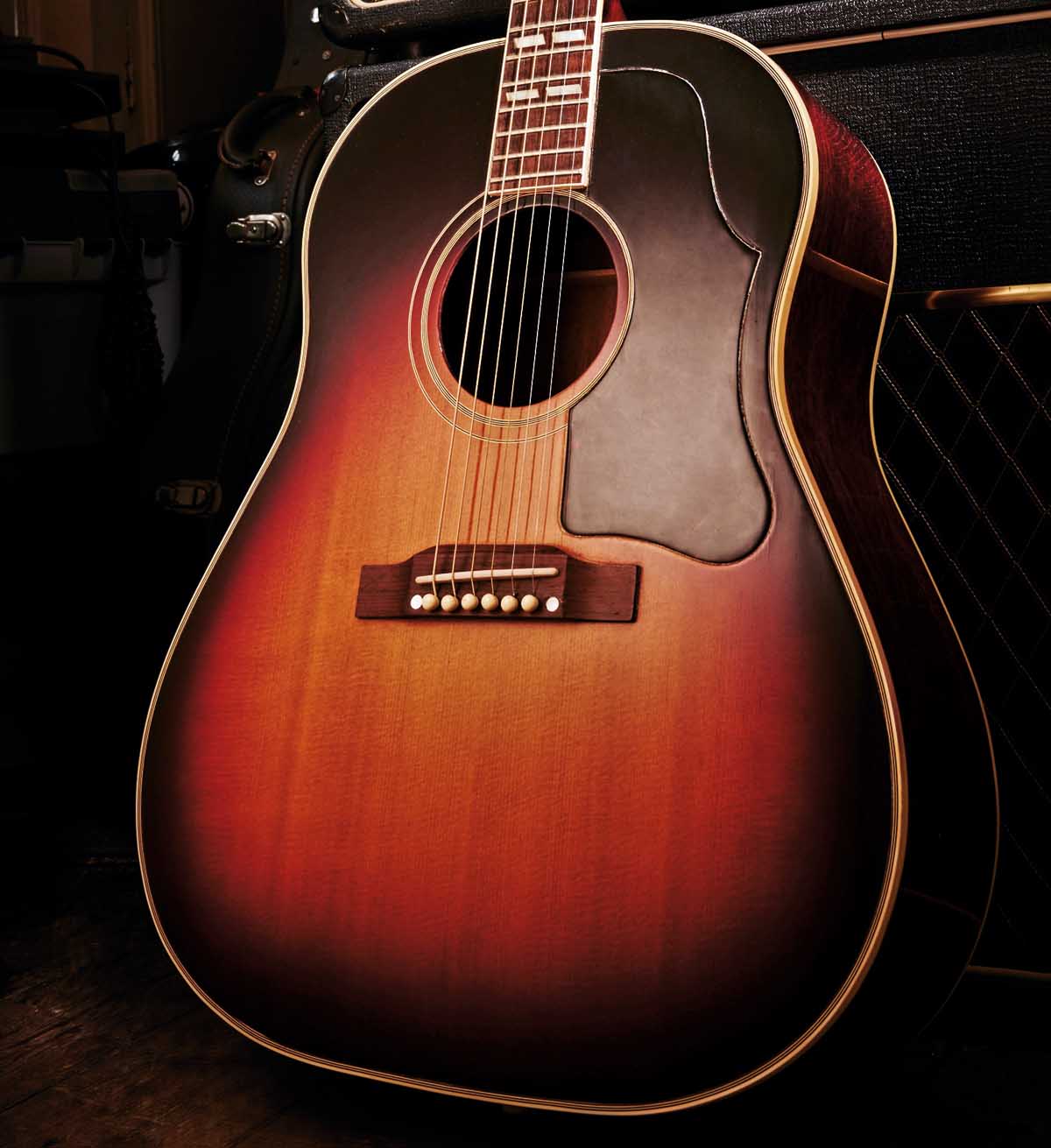
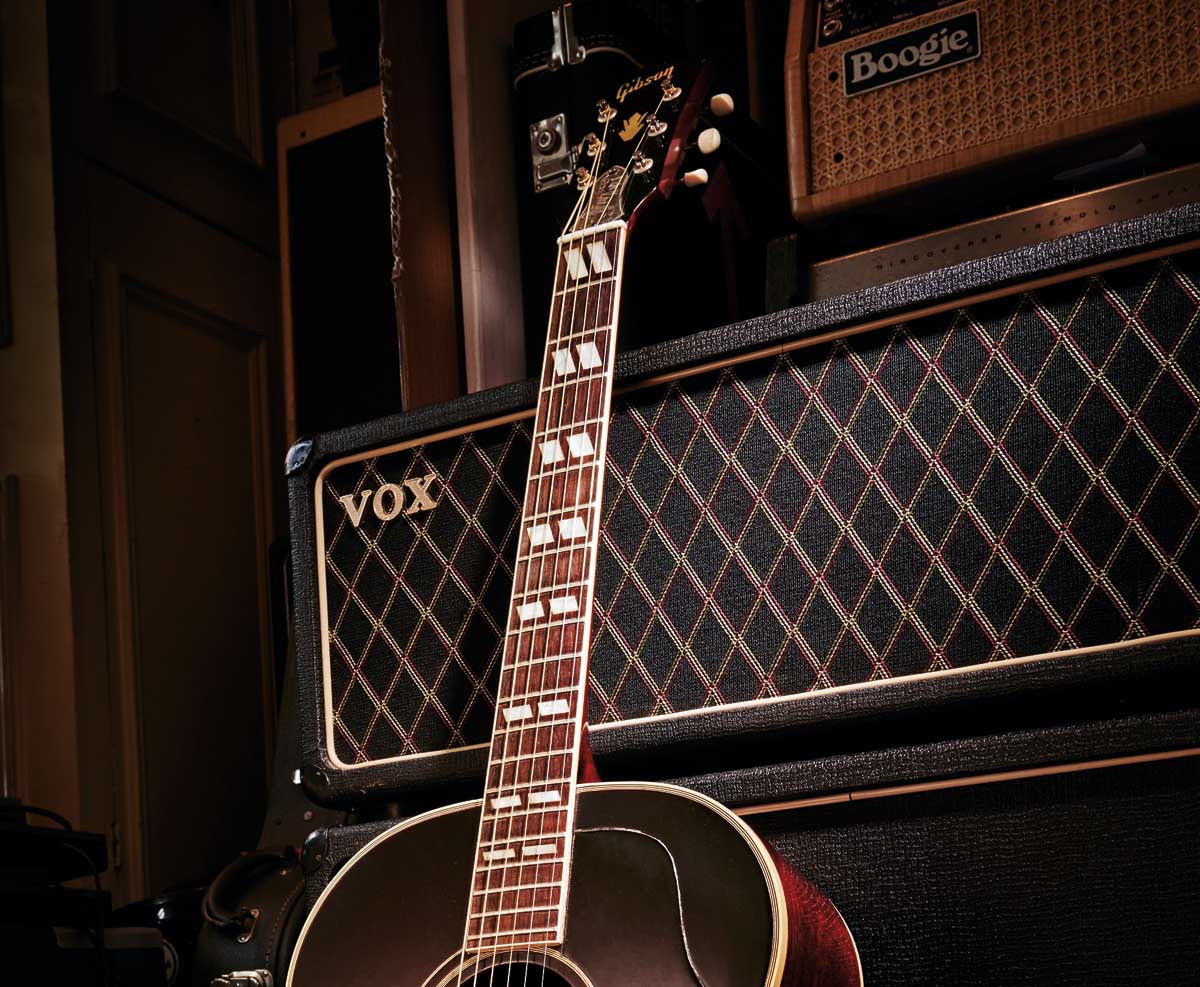
The original $60 Jumbo released in 1934 remained in production until 1936 when it was superseded by the similarly mahogany-bodied $35 Jumbo 35/J-35 and the more upmarket longer-scale, rosewood-bodied Advanced Jumbo.
Get The Pick Newsletter
All the latest guitar news, interviews, lessons, reviews, deals and more, direct to your inbox!
In 1939, the Advanced Jumbo was discontinued and the ornate Jumbo 55/J-55 was added to the line, while a natural finish became optional for the J-35 (sunburst finishes were standard for all of the above models).
During 1942, the Southerner Jumbo replaced the J-55 as Gibson’s leading dreadnought and the first models were shipped in August the following year. Immediately recognisable by its L-7 archtop-style large double-parallelogram rosewood-fretboard inlays and sunburst finish, the Southerner Jumbo is also referred to as the Southern Jumbo, or simply the SJ.
Its natural finish counterpart appeared in the mid-50s and is variously known as the Country Western and/or SJN (N stands for ‘Natural’ finish). Both models were discontinued by 1978.
J-45 / J-50
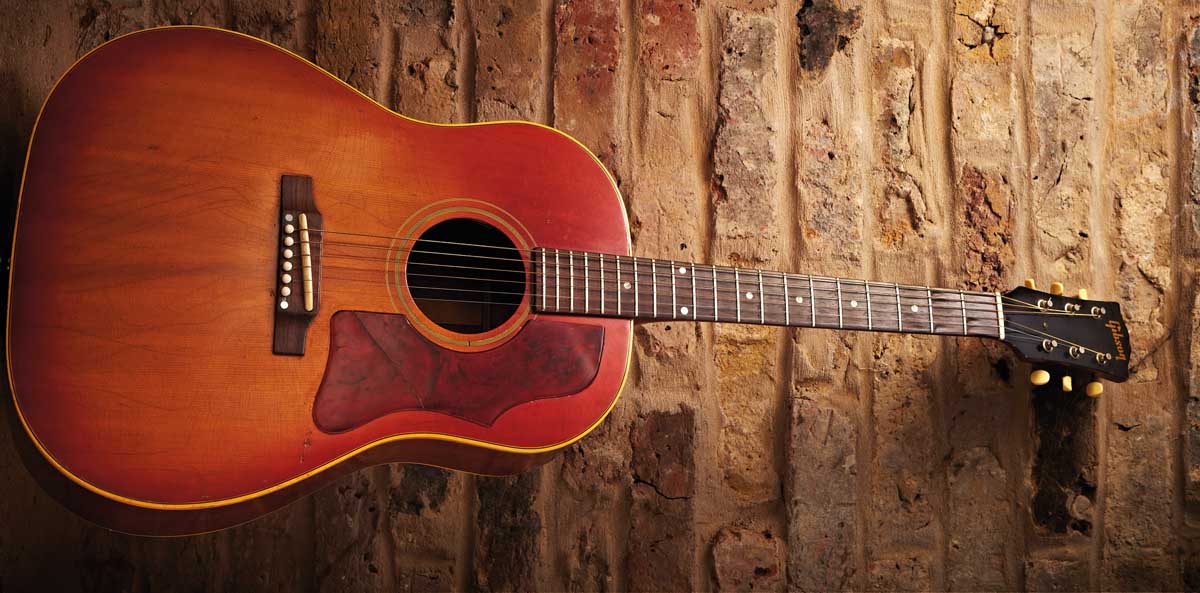
At the beginning of 1942, Gibson’s large-bodied flat-top Jumbo line-up consisted of the J-35 and J-55 dreadnoughts, along with the top-of-the-line Super Jumbo/SJ 100 and 200 models.
Not to be confused with the SJ-designated Southerner Jumbo, these larger, rounder-bodied flat-tops are alternatively prefixed with a J only and are collectively dubbed ‘jumbos’ for short (although, strictly speaking, the so-called Gibson ‘dreadnoughts’ prefixed with a ‘J’ are also Jumbos).
While the Southerner Jumbo took the spot of the J-55 in 1942, the J-35 was supplanted by the similarly plain, dot-inlayed sunburst J-45 and its natural-finish equivalent, the J-50. A Gibson memo dated August 1942 lists the ‘Southern’ (Southerner Jumbo) specs with a rosewood back and rim, although this soon changed to mahogany as per the J-45 and J-50.
The most significant change to these staple mahogany dreadnoughts occurred when the SJ/N and J-45/50 changed to a square-shouldered design in 1962 and 1969 respectively.
Dove
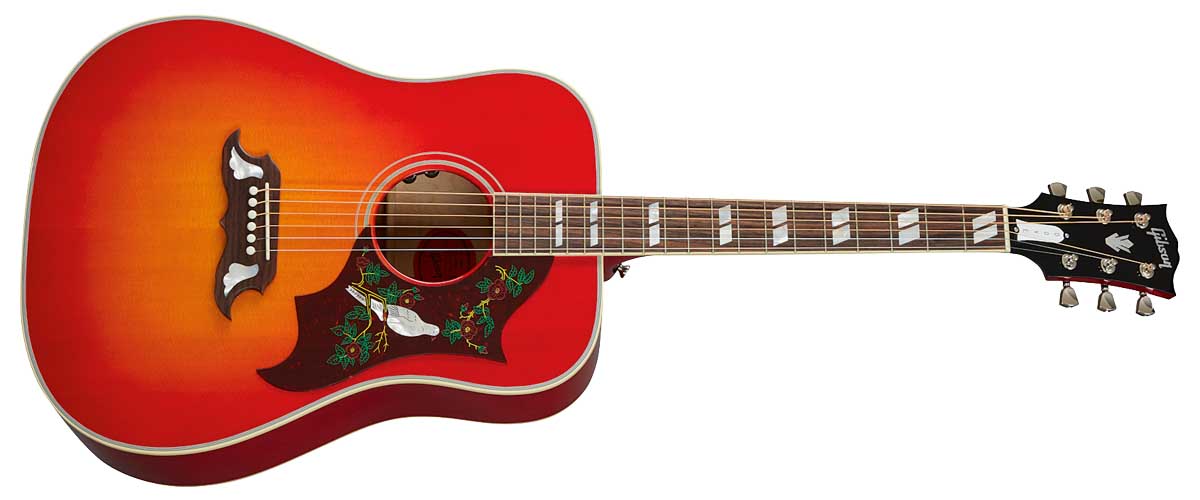
After Gibson/CMI acquired Epiphone in 1957, the company drew up a list of guitars earmarked for production, including some acoustic flat-tops. One of these, described as, “Flattop Jumbo – Maple Back and Rim… Copy Martin D’naught size”, was soon to be known as the Epiphone FT-110 Frontier.
Released in 1958, this Martin-style/square-shouldered, maple-bodied, 25½-inch-scale length dreadnought was a first for Kalamazoo and laid the foundations for the release of its Gibson equivalent, the Dove, in 1962. As per the Frontier, the Dove measures 16¼ inches in width and came in either sunburst or natural finishes.
Aside from its double-parallelogram fretboard inlays, perhaps the most striking features of the Gibson Dove are its elaborately designed, dove-themed, three-pointed pickguard and its dove wing-shaped/inlaid bridge (fitted with a Tune-o-matic until the late 60s).
Many have described the Dove’s characteristic tone as bright and percussive on account of its maple construction and longer scale length.
Hummingbird
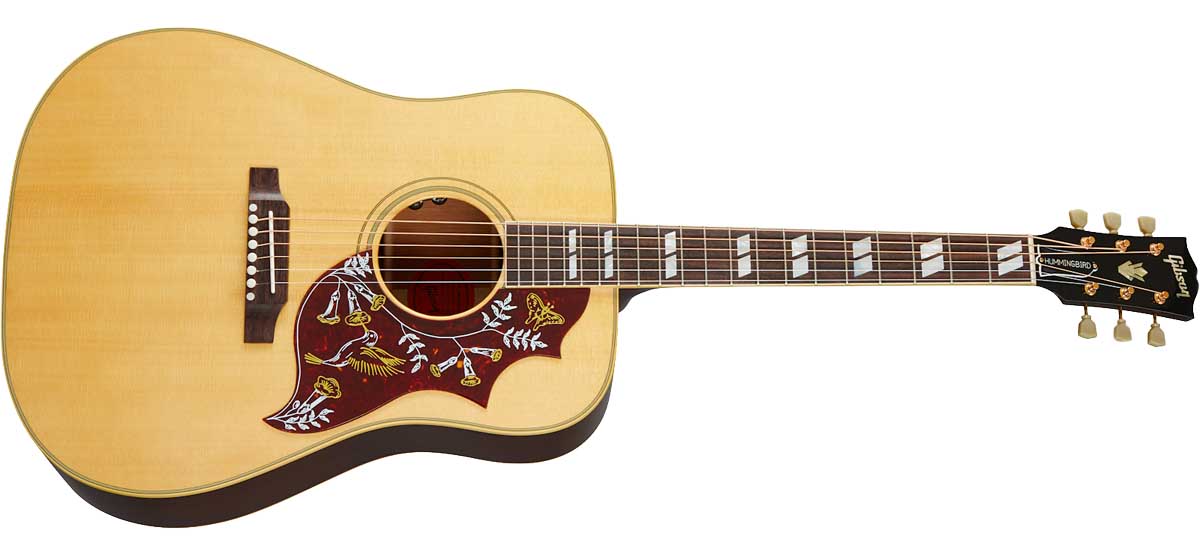
You don’t need to be an ornithologist to know the difference between a Dove and a Hummingbird but it’s more than just bird-themed pickguards that separates these two classic Gibson dreadnoughts.
For one, the Hummingbird – Gibson’s first square-shouldered dreadnought developed in 1960 – has a shorter 24¾-inch scale length, or at least it did until 1965 when it changed to 25½ inches. And, aside from some rare maple examples produced in the early 60s (known colloquially as ‘Humming-Doves’), Hummingbirds are constructed with a mahogany back and rim as standard.
Well regarded as a songwriter’s dreadnought, a Gibson brochure titled New ’61 Gibson Guitars & Amplifiers introduces the Hummingbird as “Gibson’s Sensational New Flat Top Guitar… For those interested in owning one of the finest guitars ever made for voice accompaniment.”
Indeed, from Keith Richards to Thom Yorke, this perennially popular folk-boomer has been used across a huge range of musical styles over the decades since its release.
Rod Brakes is a music journalist with an expertise in guitars. Having spent many years at the coalface as a guitar dealer and tech, Rod's more recent work as a writer covering artists, industry pros and gear includes contributions for leading publications and websites such as Guitarist, Total Guitar, Guitar World, Guitar Player and MusicRadar in addition to specialist music books, blogs and social media. He is also a lifelong musician.
“While the odd corner has clearly been cut, these are true Gibsons with all the individuality that this brand exhibits”: Gibson J-45 Special and Hummingbird Special review
“Fender has stripped back the price – but has it gone too far paring back the sounds, too?” Fender Standard Acoustasonic Telecaster review











